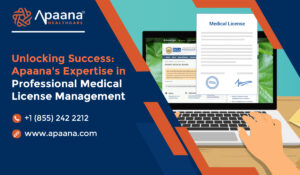Sharing is caring!

Medical Billing and Revenue Cycle Management are crucial for the financial health of healthcare organizations. However, managing these processes can be challenging due to their complexity. Accurate Coding is essential to ensure proper reimbursement and avoid claim denials. Healthcare providers must implement best practices and technology to optimize Revenue Cycle Management. With the right coding and billing practices, healthcare organizations can improve their Revenue Cycle Management, increase financial stability, and enhance patient care.
Understanding Medical Coding
Medical Coding is the process of translating medical diagnoses, procedures, and services into standardized codes for billing and reimbursement purposes. Here are some important points to understand medical coding:
- Medical coding is essential for accurate billing, reimbursement, and healthcare data analysis.
- Medical coding requires a high level of accuracy to avoid claim denials.
- The complexity of medical coding and the need for regular updates present significant challenges for healthcare providers.
- Medical Coders must undergo specialized training and certification to ensure proper coding practices.
- Advanced technology, such as automated ML-based coding scrubbers is just one example of technology that can streamline the process and minimize errors.
Listed below are the types of Medical Coding in the US Healthcare forum:
The ICD-10 (International Classification of Diseases, 10th Revision), CPT (Current Procedural Terminology), and HCPCS (Healthcare Common Procedure Coding System) coding systems are the ones that are used the most frequently.
- ICD-10-CM codes – To classify and record diagnoses and medical issues, clinical settings use ICD-10-CM codes, or International Classification of Diseases, Tenth Revision, and Clinical Modification codes. The location, severity, and underlying cause of a diagnosis are all described in ICD-10-CM codes, which are alphanumeric descriptions of the diagnoses.
- ICD-10-PCS codes– These codes are used to categorize and record medical operations in clinical settings. They provide a thorough description of the process, including the technique, tool, and body part involved.
- Current Procedural Terminology (CPT) codes: Used to identify medical procedures and services for billing purposes. CPT codes are numeric codes developed and maintained by the American Medical Association (AMA). They are used to report medical services and procedures performed by healthcare professionals in outpatient settings.
- Healthcare Common Procedure Coding System (HCPCS) codes: Used to identify medical equipment, supplies, and services not covered by CPT codes. HCPCS codes are alphanumeric codes developed by the Centers for Medicare and Medicaid Services (CMS). They are used to report services and supplies provided to patients in various healthcare settings, including outpatient and inpatient care.
- National Drug Code (NDC) Numbers: Used to identify prescription drugs for billing and reporting purposes. NDC numbers are numeric codes assigned to each drug by the FDA. They are used to report the manufacturer, strength, and dosage form of the drug.
The Impact of Accurate Coding
Accurate coding plays a critical role in Revenue Cycle Management for healthcare organizations. Here are some important points to understand the impact of accurate coding on Revenue Cycle Management:
- Accurate coding helps healthcare providers receive proper reimbursement for services provided to patients.
- Proper coding ensures that claims are submitted correctly and in a timely manner, reducing the risk of claim denials and rejections.
- Accurate coding helps healthcare providers identify coding errors and potential compliance issues, reducing the risk of audits and penalties.
- Proper documentation is essential for accurate coding and reimbursement. Accurate documentation helps ensure that all services and procedures provided to the patient are properly coded and billed.
- Proper coding also helps healthcare providers track patient outcomes and clinical effectiveness, improving patient care and treatment.
The Coding process may be streamlined, errors can be reduced, and Revenue Cycle Management can be improved with the help of automated coding systems like computer-assisted coding (CAC) and natural language processing (NLP) software. Training and education for coding professionals and healthcare providers are essential for accurate coding and Revenue Cycle Management. Ongoing training and education ensure that healthcare providers stay up-to-date with the latest coding rules and regulations.
The Role of Technology in Coding and Revenue Cycle Management
Technology has become increasingly important in the healthcare industry, especially for Medical Coding and RCM. Here are some key points to understand the role of technology in coding and Revenue Cycle Management:
- Technology can help improve coding accuracy and reduce errors, leading to better Revenue Cycle Management.
- Electronic health records (EHR) can assist healthcare professionals in electronically collecting and archiving patient data, facilitating data access and sharing with other professionals. This may result in better Revenue Cycle Management and more accurate coding.
- The coding process can be streamlined with the help of automated coding techniques like computer-assisted coding (CAC) software and ML (Machine Learning) natural language processing (NLP). Example of one such tested automation tool which improves reimbursements, checks compliance and reduces operating cost by Automated claims scrubbing by AdvancedMD.
- Technology can help healthcare personnel find coding errors and other compliance problems to reduce the risk of audits and fines.
- Technology can also help with claims processing and denial management, reducing the administrative burden on healthcare providers and improving Revenue Cycle Management.
- With the increasing use of telehealth and remote patient monitoring, technology is becoming even more important in the healthcare industry, and healthcare providers must stay current with the latest advances to ensure accurate coding and Revenue Cycle Management.
Best Practices for Accurate Medical Coding and Revenue Cycle Management
To ensure accurate medical coding and Revenue Cycle Management, healthcare organizations should follow these best practices:
- Provide ongoing training and education to coding professionals and healthcare providers on the latest coding rules and regulations. The AAPC, which stands for the American Academy of Professional Coders, is a globally recognized organization that offers top-notch training and credentialing services. With a focus on medical coding, billing, and other healthcare-related fields, the AAPC provides invaluable opportunities to its members around the world.
- Use technology, such as electronic health records (EHR) and automated coding systems, to improve coding accuracy and streamline Revenue Cycle Management processes.
- Conduct regular audits and reviews of coding practices to identify and correct errors and compliance issues.
- Emphasize the importance of proper documentation to ensure accurate coding and reimbursement.
- Establish clear policies and procedures for coding and Revenue Cycle Management, including a process for handling claim denials and appeals.
- Stay up-to-date with regulatory and compliance requirements, including HIPAA and CMS guidelines.
- Implement a system for tracking and reporting revenue cycle metrics, such as claim submission and payment processing times, to identify areas for improvement.
- Ensure that coding professionals and healthcare providers communicate effectively to ensure accurate coding and billing.
- Establish a process for monitoring and addressing coding and Revenue Cycle Management issues, such as denials and compliance violations, in a timely and effective manner.
By following these best practices, healthcare organizations can improve their medical coding and Revenue Cycle Management processes, reduce errors and compliance risks, and ensure accurate reimbursement for services provided to patients.
In conclusion, accurate medical coding and Revenue Cycle Management are essential for the financial health of healthcare organizations. With the increasing complexity of coding rules and regulations, ongoing education and training are crucial to ensure accuracy and compliance. At Apaana Healthcare, we specialize in medical coding and Revenue Cycle Management services, helping healthcare providers streamline their processes and maximize revenue. Contact us today to learn how we can help your organization improve its coding and Revenue Cycle Management practices.
References
- “Revenue Cycle Management in Healthcare” by Health Catalyst: Revenue-Cycle-Management-in-Healthcare-Analytic-Driven-Insights-and-Efficiencies.pdf (healthcatalyst.com)
- “Medical Coding: What It Is and How It Works” by the American Academy of Professional Coders: https://www.aapc.com/medical-coding/medical-coding.aspx
- “Introduction to Medical Coding” by the Centers for Medicare & Medicaid Services: Slide 1 (cms.gov)
- “Coding Best Practices for Optimizing Reimbursement” by R1 RCM: Whitepaper | Getting Paid for All You Do (r1rcm.com)
- “Success in Proactive Denials Management and Prevention” by the HFMA: Success in Proactive Denials Management and Prevention (hfma.org)
- “Automating Revenue Cycle Management Improves Patient Experience” by RevCycle Intelligence: Automating Revenue Cycle Management Improves Patient Experience (revcycleintelligence.com)
- “Impact of Electronic Health Records on Coding Efficiency and Accuracy: A Review of the Literature” by the Journal of Healthcare Information Management: https://www.ncbi.nlm.nih.gov/pmc/articles/PMC4486524/
- “Best Practices for Revenue Cycle Management” by the AHIMA: EIN: 36-4303517 (ahima.org)
- “Boost revenue by getting coding right” by Medical Economics: Boost revenue by getting coding right (medicaleconomics.com)





